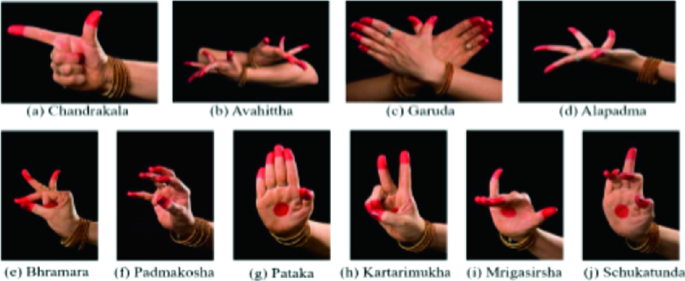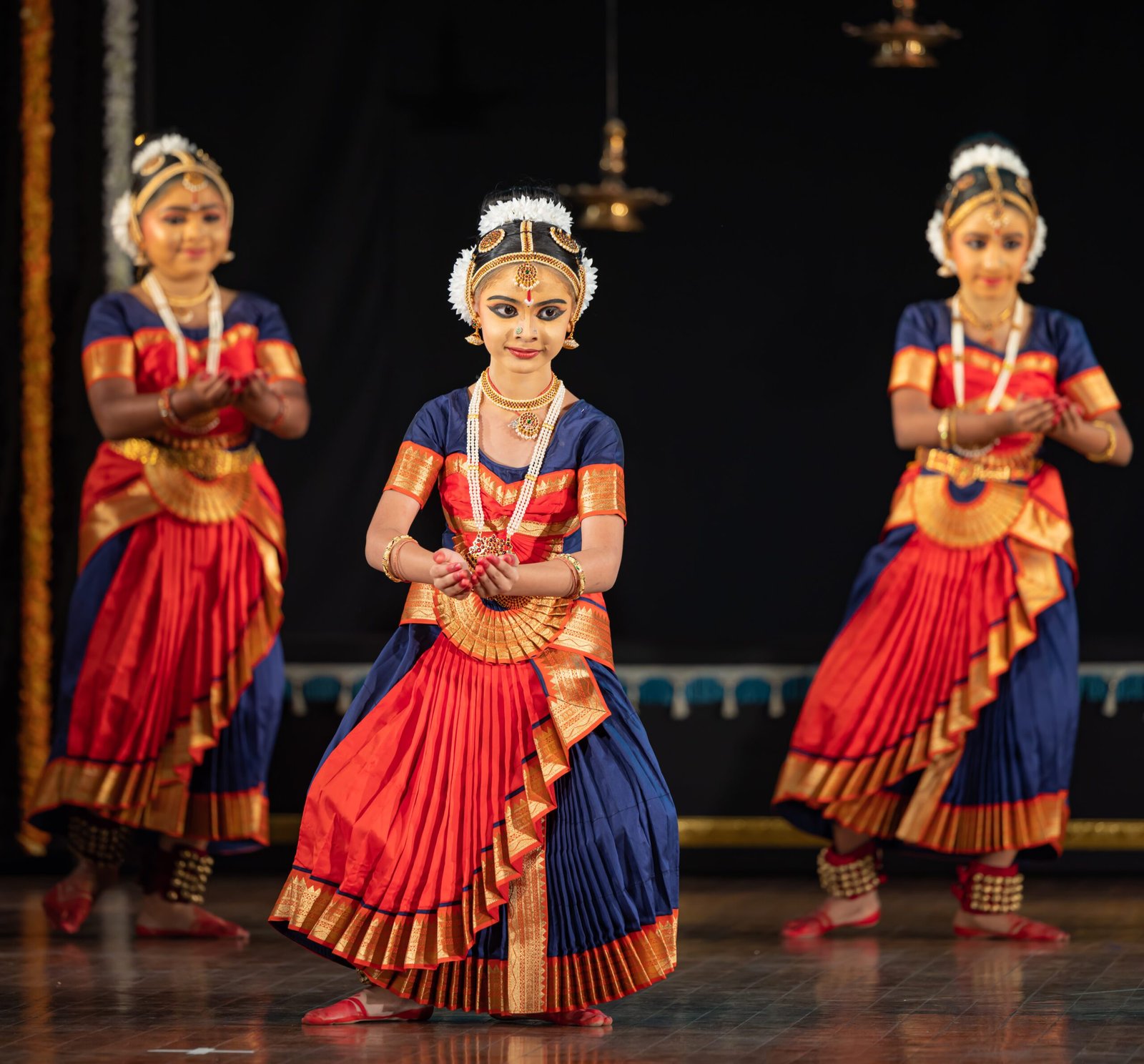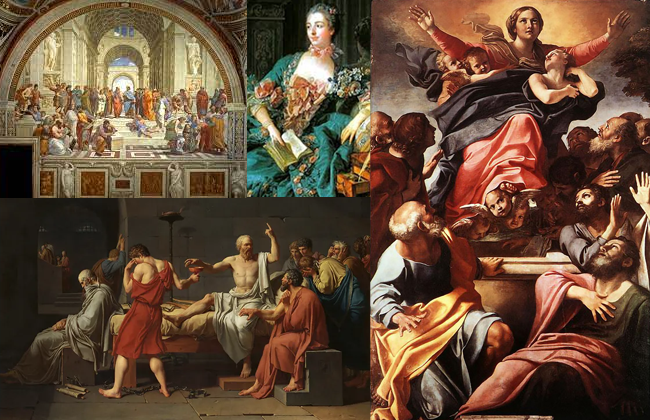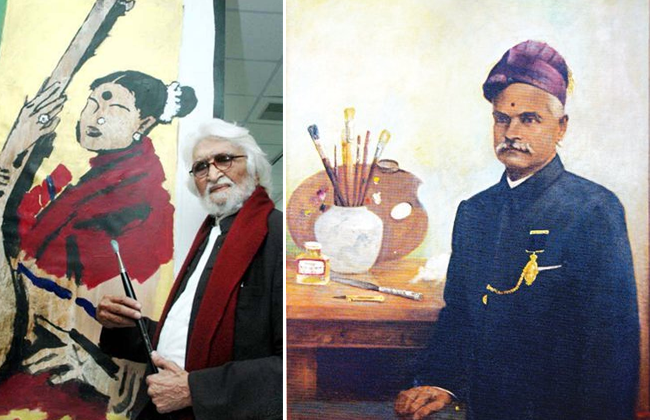Bharatanatyam Poses and Mudras: Bharatanatyam, one of India’s oldest classical dance forms, is renowned for its intricate poses and mudras (hand gestures) that convey stories, emotions, and spiritual themes. Each pose and gesture in Bharatanatyam has a specific meaning, allowing dancers to narrate epic tales from Hindu mythology and express a wide range of emotions through their performance.
Importance of Poses in Bharatanatyam
Bharatanatyam relies heavily on body postures to convey grace, rhythm, and character. Key poses, or adavus, form the foundation of the dance and combine footwork, body alignment, and hand movements. Common poses include:
- Aramandi: The half-sitting posture that strengthens legs and provides stability during complex footwork.
- Natyarambha: The starting pose that establishes the dancer’s poise and readiness.
- Tribhangi: A three-bend posture highlighting the curvature of the body, enhancing elegance and expressiveness.
These poses ensure that the dancer maintains balance while allowing for intricate footwork and fluid transitions between movements.
Role of Mudras
Mudras, or hand gestures, are a vital aspect of Bharatanatyam, used to communicate specific meanings, objects, actions, and emotions. Bharatanatyam uses two types of mudras:
- Asamyukta Hastas: Single-hand gestures that represent concepts like the sun, moon, or flower.
- Samyukta Hastas: Double-hand gestures used to depict more complex ideas or actions, such as bowing, fighting, or embracing.
Each mudra is combined with facial expressions, eye movements, and body postures to create a complete narrative, making Bharatanatyam a highly expressive and storytelling-oriented dance form.
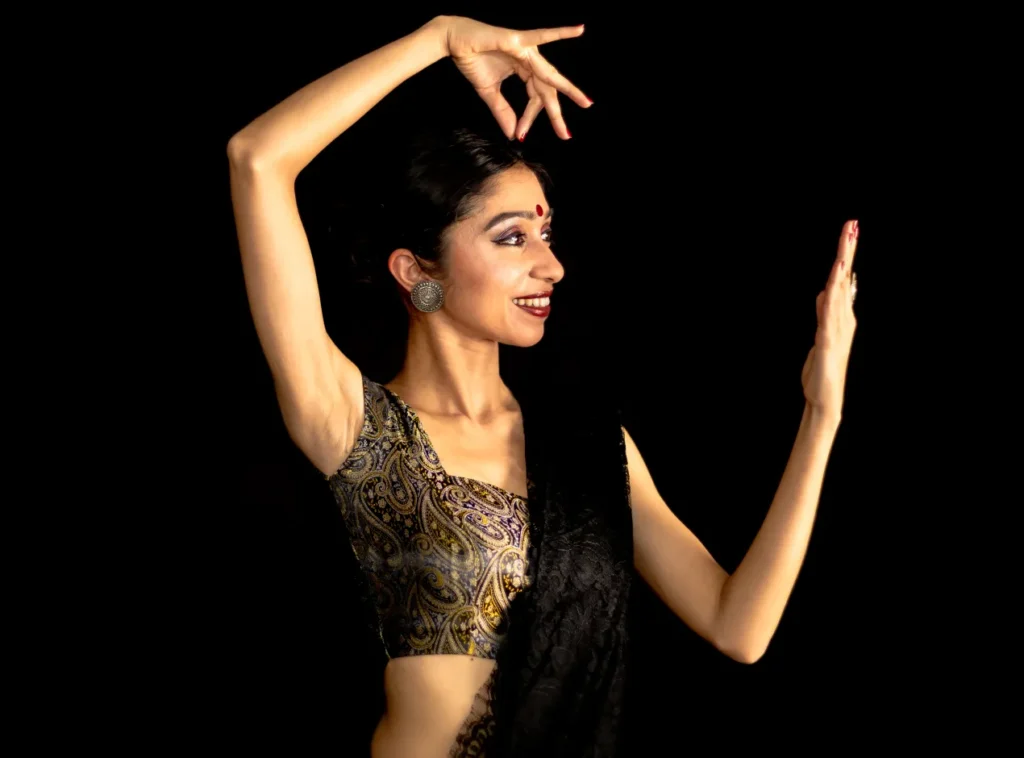
Expressing Emotions through Abhinaya
Abhinaya, the art of expression, complements poses and mudras. Through controlled gestures, subtle facial expressions, and eye movements, dancers convey navarasas—the nine emotions: love, compassion, anger, courage, fear, disgust, wonder, peace, and sadness. This combination of mudras, poses, and abhinaya allows audiences to experience a rich emotional journey.
Bharatanatyam poses and mudras are the heart of this classical dance form, enabling dancers to communicate intricate stories, emotions, and spiritual devotion. Mastery of these gestures preserves centuries of cultural tradition, making Bharatanatyam both an art of elegance and a timeless medium of storytelling.
![]()

